House sparrows have long been associated with people. These pest birds have chosen to live near human dwellings and take advantage of this close association. As a result, they can wreak havoc on your property, and your sanity!
Sparrows prefer to nest in covered spaces, mostly in residential buildings, although they frequent barns and outhouses as well.
They build their nests using a variety of materials such as wool, hair, or man-made products, but grass or straw is always their favorite. Occasionally, they utilize nests abandoned by other birds.
In this article, we will discuss all the places that sparrows like to nest in your home. So keep reading to learn more!
Common Places Where House Sparrows Can Be Nesting
IN ROOF SPACES
They have a bad reputation for nesting in roof spaces where they gain access through cavities under the eaves. The gaps allow the sparrows to be able to get in and out as they please.
If the roof on your house has clay or concrete tiles, sparrows usually build their nests under the tiles, at the edges of the roof, and above the fascia boards.
When the birds push their nest materials under the overhanging barrel-shaped tiles, they will dislodge these tiles and cause them to fall crashing down.
In addition, loose, missing, or cracked tiles can soon become potential sites for sparrow nests, and harmless looking debris or dirt will only help fuel the problem.
Besides nesting in the eaves, in rafters, and underneath the roof shingles, house sparrows tend to make their nests in soffits. These spots are perfect for roosting as they provide cover to stay away from predators and good shelter from the elements.
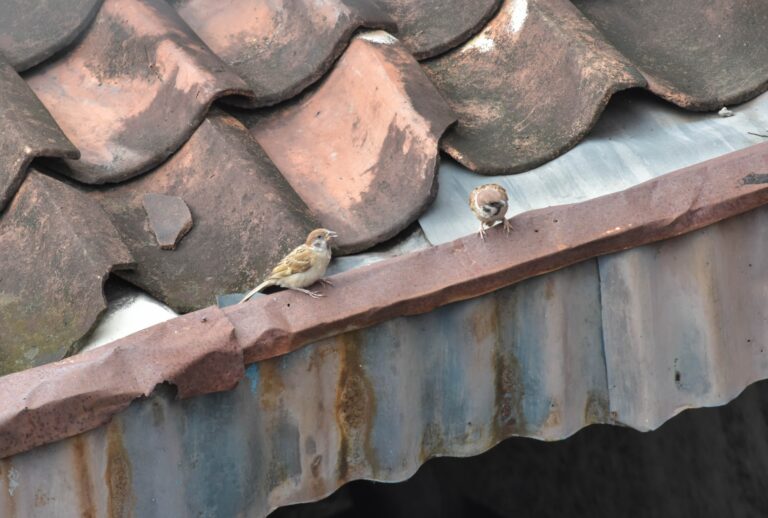
UNDER AWNINGS
Sparrows can build nests on or under your patio awnings as they are easy to rest on.
There are many methods you can use to stop these birds from nesting under your awning. Using bird netting is excellent for keeping sparrows away and prevent them from making a nest in the awnings. And even if they come too close to the net, they will not become trapped in it.
IN CHIMNEY
Just like the roof and awnings, a chimney is ideal to set up a home due to the great deal of protection and warmth that it provides.
There is only one way that birds get into the chimney, namely through the upper portion of the chimney.
However, it often happens that the birds nesting on top of the chimney wander inside or slip off the edge. And that leaves them unable to fly up again to escape. There is not enough space to spread wings, nor can they fly vertically.
Sadly, birds can be difficult to get out of the chimney.
IN ATTIC
House sparrows in the attic are a common problem as they will build nests and lay eggs happily in such a warm, secluded place.
A high place like the attic is easy to take flight and stay close to food sources. Nests in attics are usually located 8 to 30 feet off the ground, which allows sparrows to hide from predators.
Damaged roofs and small openings near the top of a house such as attic vents, could allow birds into your home. Since sparrows are little creatures, they can fit easily through crevices in the roof, walls, and windows as tiny as 3/4 of an inch.
INSIDE WALL CREVICES
Sparrows are also notorious for sneaking into various openings in structures and making their nests in the crevices of walls. Once some of them have found a site they enjoy, sparrows will then begin to swarm the place in large numbers.
Thus, it’s important to inspect your walls for cracks, holes, and crevices that may serve as entrance points for these birds.
And if you notice that the exterior walls are stained with bird droppings, that’s a clear sign that sparrows are making themselves at home, in your home!
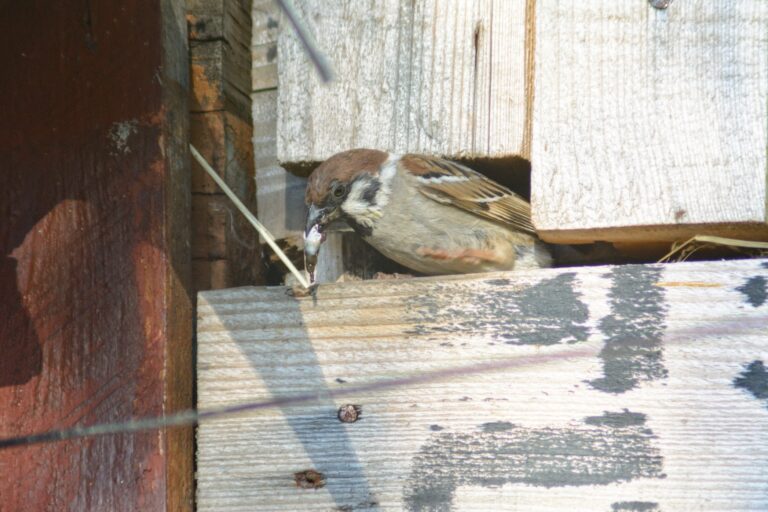
IN VENTS
Dryer vents, attic vents, as well as openings found on the home’s exterior walls from bathroom and kitchen exhaust fans, provide excellent nesting locations. Since the vents are quite small (typically 3 or 4 inches in diameter), sparrows find them ideal to stuff their nesting materials into them.
Vent openings usually have plastic or aluminum covers that stop drafts from getting in. But these covers are nothing but just flaps or louvers that open easily to allow air to escape. The sparrows have learned to manipulate them effortlessly.
Feces and urine inside the vents can create a strong odor throughout your home.
IN GUTTERS
House sparrows might also decide to nest in your gutters. When a bird builds its nest in the rain gutter, it becomes a mess as there is a lot of debris and droppings left around.
This will eventually block the flow of water, which may present a fire hazard at some point. So this is why it’s very important to stop sparrows from nesting in the gutter.
IN TREES
Open tree branches or enclosed cavities in a tree are ideal places for the birds to nest in. And sparrows will indeed choose them when other sites such as holes in building walls, vents, birdhouses, and more, are scarce.
On a Final Note,
Your house structure can provide sparrows with a great substitute for a tree hollow. Thus, you need to act as soon as you see a telltale sign of them settling in so that you don’t let these little cute birds become a big pest problem in the future.
Here at Westchester Wildlife, our specialists have all the tools and knowledge to discourage sparrows from choosing your home to nest in. So contact us today and have our trained technicians deal with your pest bird problem safely and humanely.
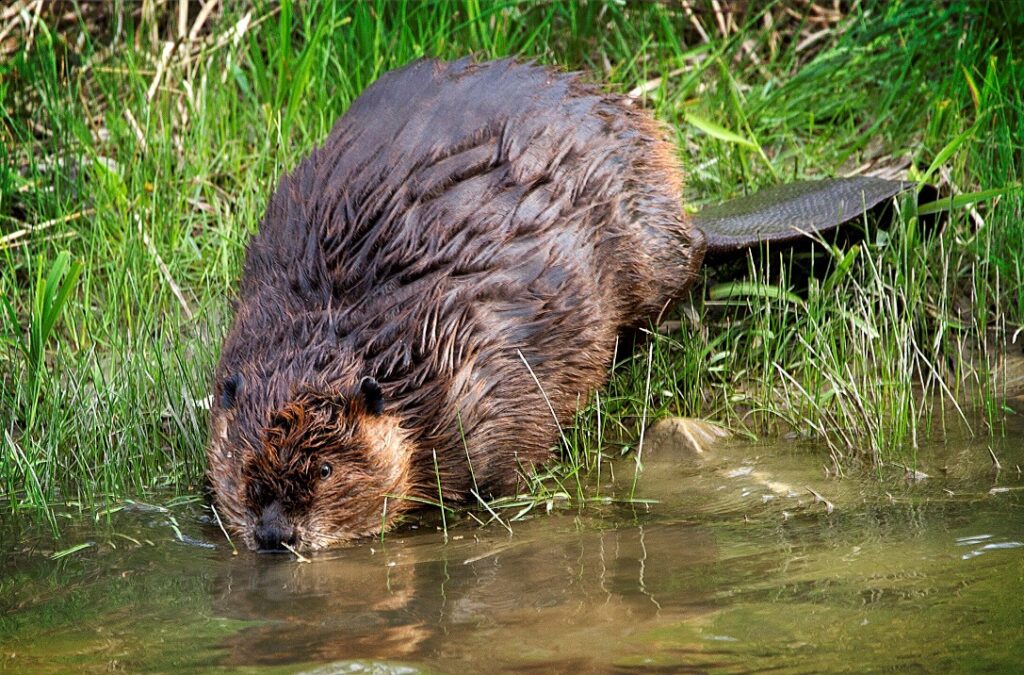 Do Beavers Eat Wood In Your Backyard?
Do Beavers Eat Wood In Your Backyard?
Everyone’s heard about the woodchuck chucking wood, but what about the beaver that eats wood? Could this be happening in your backyard these days, without you even knowing?
First, let’s discuss how beavers eat. The large front teeth, called incisors, that you see on the outside of the closed mouth of a beaver actually mean they are eating something most of the time.
Just like a human, a beaver tends to eat with its mouth closed. It just has a nasty overbite that it sometimes uses to peel off bark to eat much like a human unwrapping a candy with their own fingers.
Do Beavers Really Eat Wood?
The truth is, beavers do not eat the wood or the whole tree but rather the cambium layer – the inner bark off of the tree which they just chew and then spit it out.
After that the wood is taken to form a dam or a lodge for them to live in on the water of a river. It makes for a much lighter outward style of housing, even without the need for painting as it would be in the case of humans.
Beavers have also been known to eat the softer wood just underneath the bark of the tree at times.
Mostly though, they just eat leaves and aquatic plants that can be found just outside of their new woody homes.
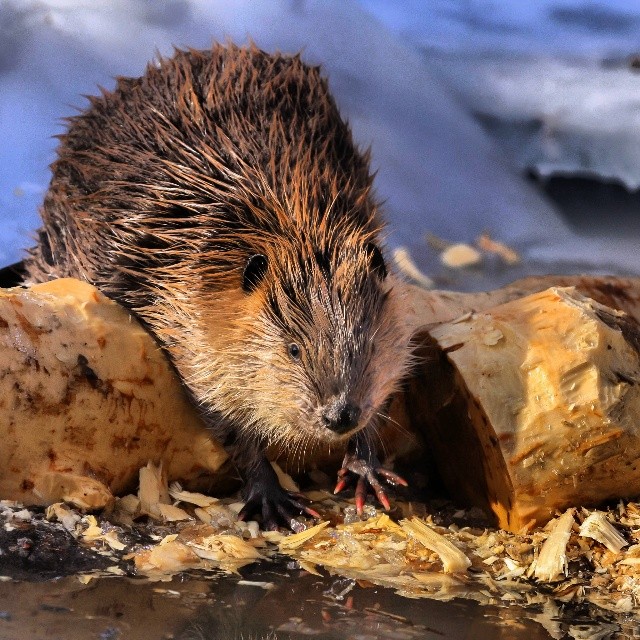
What Type Of Trees Do Beavers Eat And Not Eat?
What about the kind of trees beavers consume the bark of and use for housing? No beaver will enter your yard if you don’t have the right trees, after all!
Conifer trees are only eaten by beavers if every other food source is scarce in the area. However, they love willows, so you may want to consider a small indoor container willow tree rather than a live one outside.
Do Beavers Eat The Whole Tree And How Long Does It Take a Beaver To Chop Down a Tree?
Also, people can sometimes get very confused about whether or not beavers use the entire tree for eating and the building of their homes, and how long this can take. After all, you’d rather have a tree fully removed from your home than simply leave a dead stump or having to look outside and see a half-eaten tree in your yard for a week, right?
If you consider an eight-foot tree to be the average in your yard, then you’ve gotta look out! The “busy beaver” concept is most true at night in this instance, where only five minutes is needed for a beaver to do enough chewing with its incisors to fell a single eight-foot tree.
Knowing that beavers often live with their families means they could chop down half your yard in that time if they all worked together. Imagine the nightmare that replanting all those trees would be!
These rodents do find a use for the whole tree as well. Of course, as stated previously, the tree itself is used for food at the time, but the branches are widdled down a bit at the ends and stacked together for the use of lodgings.
That means every part of the tree they cut down is primed for use. Even though they do leave a stump behind as a calling card for you in the morning, and that would be an unfortunate truth you’d have to deal with.
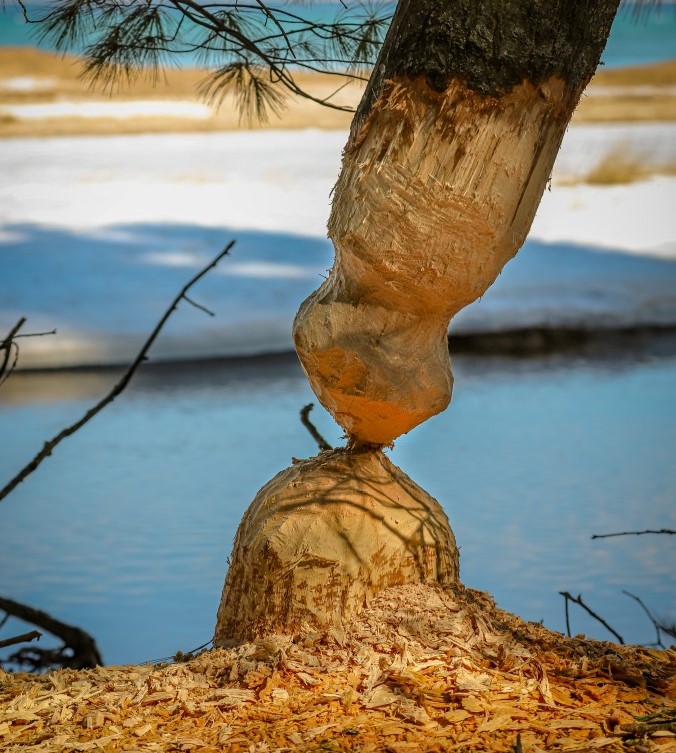
What Size Tree Can a Beaver Cut Down?
But going on the higher end of the spectrum, how tall of a tree can a single beaver cut down? And how much wood can the most eager beaver consume at once? Or will there be a log sitting next to your stump that the beaver just couldn’t finish gnawing on before you got up in the morning?
A tree as wide as 33 inches around, that’s 3 whole feet, can be eaten through by a beaver for use in their dams and lodgings. These animals usually prefer the smaller trees though, no matter how tall, at a 2 to 6 inch diameter. That means that your big, very old trees will most likely remain safe, while your new, small trees are the ones to look out for.
But this also means how tall your tree is doesn’t matter to the busy beaver. It could be 3 feet tall or 30, the beaver only has to chew the bottom off of it and you’ll have a problem anyway.
How Much Wood Can a Beaver Eat?
As it turns out, beavers actually only eat about 1.4 to 1.5 pounds of wood per day. That means, unfortunately, you will find logs sitting around at riverbanks or next to your wildlife pond that the beavers choose to live in.
Luckily, the beavers will move your log free of charge so they have ready access to the top of the chopped tree for building their homes as well as having an abundant supply of food for a few days or maybe even over a week.
This would explain why only one tree seems to be needed by a beaver at a time, at least before it starts a family.
Beavers are known to be very hard-working animals, but surely you don’t want them working hard on your property. It’s important to eliminate these critters as they can cause a massive amount of damage, fast! Besides cutting down the trees in your backyard, the dams they build can cause flooding that will destroy your landscaping.
Westchester wildlife offers professional beaver removal services for New York and Connecticut. Our beaver control experts will humanely remove these rodents and ensure they don’t return to your property. So if you are having problems with beavers, don’t hesitate to contact us today.
